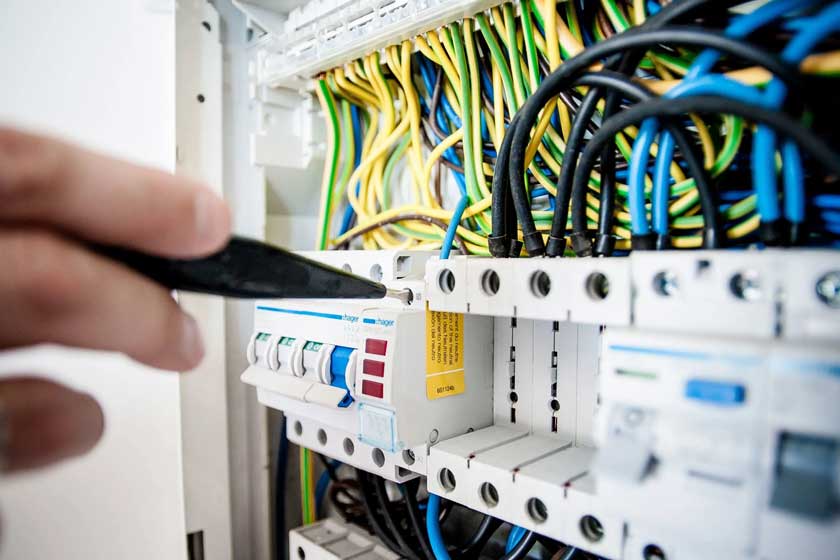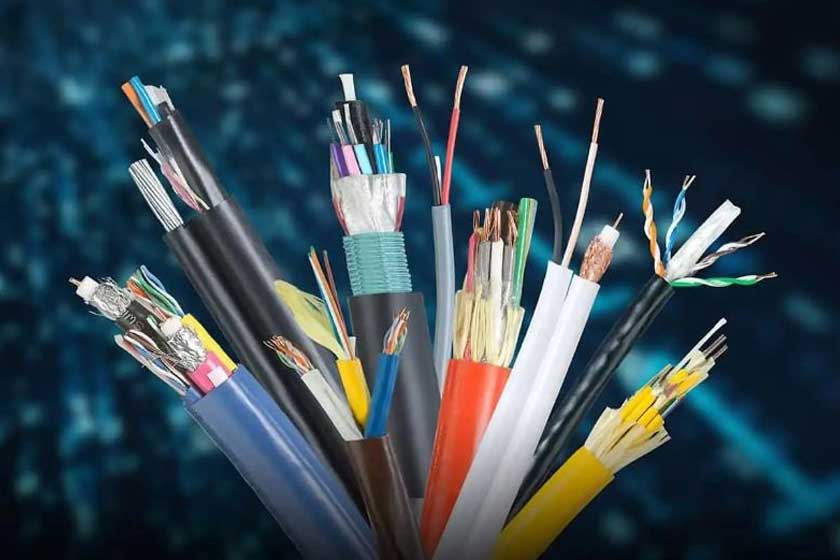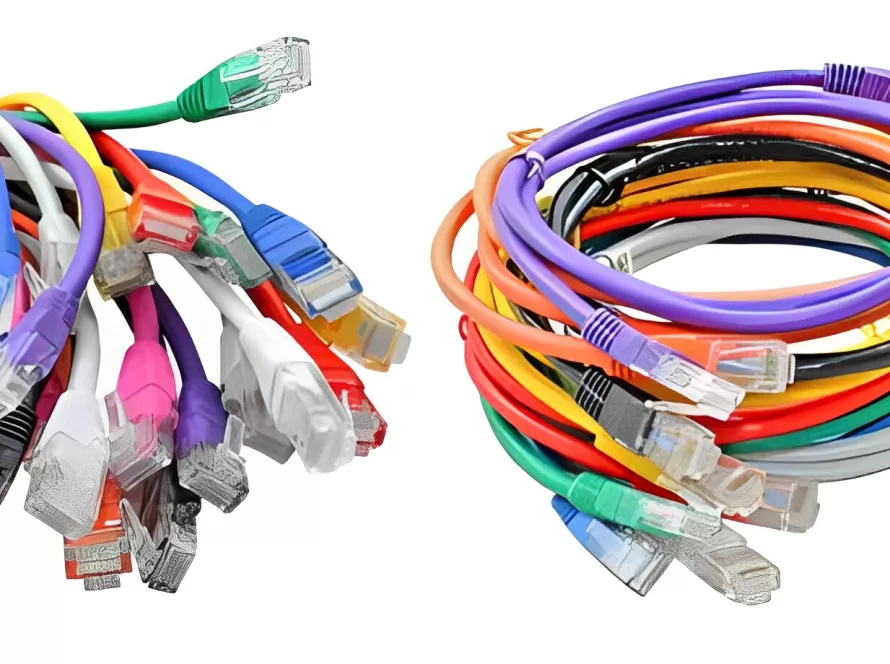The Basics of Coaxial Cable: What It is and How It Works

The Introduction to Coaxial Cable Materials
Coaxial cable is a type of electrical cable that is used for transmitting radio frequency (RF) signals over long distances. It is a highly effective means of transmitting high-frequency signals with minimal losses, and is commonly used for cable TV, internet, and other types of data transmission.
Coaxial cable consists of a copper conductor that is surrounded by a layer of insulation, which is then covered by a metallic shield and an outer layer of insulation. The copper conductor carries the signal, while the insulating layer provides separation between the conductor and the shield. The metallic shield helps to reduce interference from other electronic devices and external sources, which can cause noise and distortions in the signal, here we will give brief introductions of each part respectively.
The copper conductor in coaxial cable is typically made of solid or stranded copper wire. Solid copper wire is more durable and is better suited for high-frequency applications, while stranded copper wire is more flexible and easier to work with. The insulating layer, which is typically made of a plastic material such as polyethylene or Teflon, helps to prevent the copper conductor from coming into contact with the metallic shield.
The metallic shield in coaxial cable is typically made of a braided or foil material, and provides additional protection against interference. The braided shield is made up of a series of woven copper wires that surround the insulating layer, while the foil shield is made up of a thin layer of aluminum or copper that is wrapped around the insulating layer. Both types of shields are effective at reducing interference, although the braided shield is generally considered to be more durable and more effective.
The outer layer of insulation in coaxial cable is typically made of a plastic material such as PVC or polyethylene, and provides additional protection against damage and interference. It also helps to maintain the shape of the cable and prevent it from becoming twisted or bent out of shape.
One of the key advantages of coaxial cable is its ability to transmit high-frequency signals over long distances without suffering from significant losses. This is due to the fact that the metallic shield helps to reduce interference and maintain the integrity of the signal. Coaxial cable is also highly durable, and can withstand a wide range of environmental conditions without suffering from damage or degradation.
Another advantage of coaxial cable is its high bandwidth capabilities. This makes it well-suited for applications such as cable TV and internet, which require the transmission of large amounts of data over long distances.
In addition to its use in data transmission, coaxial cable is also commonly used in radio and other communications applications. It is used to transmit signals between antennas and other components of communication systems, and is often the preferred choice for these types of applications due to its high performance and durability.
Overall, coaxial cable is a highly effective means of transmitting high-frequency signals over long distances. It is widely used in a range of applications, from cable TV and internet to radio and other communications systems. Its durability, high bandwidth capabilities, and resistance to interference make it an excellent choice for many types of data transmission needs.Structure and components of coaxial cable.
How Signals Travel Through Coaxial Cable?
It is known to us that signals travel through coaxial cable by way of the copper conductor in the center of the cable. The signal is an electrical voltage that travels through the copper wire as a wave, and is surrounded by the insulating layer, which helps to prevent the signal from leaking out or coming into contact with the metallic shield.
As the electrical signal travels through the copper wire, it creates an electromagnetic field that is also carried through the insulating layer and the metallic shield. This electromagnetic field can interfere with other electronic devices and external sources, which is why the metallic shield is used to reduce interference and maintain the integrity of the signal. While The metallic shield helps to block external electromagnetic fields from interfering with the signal by reflecting or absorbing them. The braided shield is particularly effective at this, as it provides a high degree of coverage and protection against interference.
The insulating layer between the copper conductor and the metallic shield also helps to reduce interference by preventing the signal from coming into contact with the shield. The insulating layer is typically made of a material that has a low dielectric constant, which helps to reduce the capacitance of the cable and maintain the signal’s strength.
In a word, the combination of the copper conductor, insulating layer, and metallic shield in coaxial cable provides an effective means of transmitting high-frequency signals with minimal losses and interference. The signal travels through the center of the cable as an electromagnetic wave, while the metallic shield and insulating layer help to protect it from interference and maintain its integrity.
Wide Applications of Coaxial Cable in Various Fields
Coaxial cable is a type of transmission line that has been used for over a century to transmit signals over long distances. It consists of an inner conductor, an insulating layer, a metallic shield, and an outer jacket. Coaxial cable is commonly used for applications such as cable TV, internet connectivity, and security systems. In this essay, we will discuss some of the applications of coaxial cable in more detail.
One of the most common applications of coaxial cable is in cable TV systems. Coaxial cable is used to transmit the cable TV signal from the cable company to the customer’s home. The cable TV signal is transmitted at a high frequency, typically in the range of 50 to 1000 MHz. Coaxial cable is well-suited for this application because it is able to transmit high-frequency signals over long distances without significant signal loss or interference. The metallic shield of the coaxial cable helps to minimize external interference, and the insulating layer helps to prevent signal loss due to capacitance and inductance.
Another important application of coaxial cable is in broadband internet connectivity. Coaxial cable is used to transmit high-speed internet signals from the internet service provider (ISP) to the customer’s home. In this application, coaxial cable is often used in conjunction with a cable modem, which converts the digital signals from the ISP into a form that can be used by the customer’s computer or other devices. Coaxial cable is able to transmit high-speed internet signals over long distances, and is well-suited for this application because it is able to minimize signal loss and interference.
In addition to these applications, coaxial cable is also used in a variety of other applications. For example, coaxial cable is used in radio frequency (RF) communication systems, such as those used by amateur radio operators and in aviation. Coaxial cable is able to transmit RF signals over long distances with minimal signal loss or interference, making it well-suited for these applications. Coaxial cable is also used in medical equipment, such as MRI machines, where it is used to transmit high-frequency signals with minimal interference.
Coaxial cable is also used in the military and aerospace industries, where it is used to transmit signals in harsh environments. Coaxial cable is able to withstand extreme temperatures, shock, and vibration, making it well-suited for use in these industries. Coaxial cable is also used in automotive applications, such as in-car entertainment systems and GPS navigation systems, where it is able to transmit signals over long distances with minimal interference.
Every coin has two sides, coaxial cable does have some limitations. One limitation is that it is not well-suited for high-frequency applications above a few gigahertz. For these applications, other types of transmission lines, such as waveguides, are typically used. Another limitation of coaxial cable is that it is relatively bulky and inflexible, which can make it difficult to install in some applications.
Coaxial cable is a versatile and reliable type of transmission line that is used in a wide variety of applications. Its ability to transmit signals over long distances with minimal signal loss or interference makes it well-suited for applications such as cable TV, internet connectivity, and security systems. Coaxial cable is also used in a variety of other applications, including RF communication systems, medical equipment, and military and aerospace applications. While coaxial cable does have some limitations, its many advantages make it a popular choice for many different types of applications.
How to Install Coaxial Cable: Step-By-Step Guide
Coaxial cable is a type of transmission line that is commonly used for a variety of applications, such as cable TV, internet connectivity, and security systems. If you need to install coaxial cable in your home or business, the following step-by-step guide will help you do so:
Step 1: Gather the necessary tools and materials
- Before you begin, you will need to gather the necessary tools and materials. These may include:
- Coaxial cable
- Coaxial cable connectors (also known as F-type connectors)
- Cable cutter or stripper
- Coaxial cable compression tool
- Coaxial cable tester
- Drill and drill bits (if you need to drill holes for the cable)
Step 2: Plan your cable route
Next, you will need to plan your cable route. Determine where you want the cable to go and where you need to drill holes or run the cable through walls. Make sure to take into account any obstacles or potential sources of interference, such as electrical wires or other cables.
Step 3: Cut the cable to the desired length
Once you have planned your cable route, use your cable cutter or stripper to cut the coaxial cable to the desired length.
Step 4: Strip the cable
Next, use your cable stripper to remove about 1 inch of the outer jacket from the end of the cable. You should see a metallic shield and an inner conductor.
Step 5: Install the connector
Now it’s time to install the connector. Place the connector over the exposed metallic shield, making sure that the metallic shield is fully inserted into the connector. Then, using your coaxial cable compression tool, compress the connector onto the cable.
Step 6: Test the cable
Once you have installed the connector, use your coaxial cable tester to test the cable and make sure that it is working properly.
Step 7: Install the cable
Finally, you can install the cable in its desired location. If you need to drill holes or run the cable through walls, make sure to do so carefully and safely. Repeat the process for any additional cables you need to install.
In conclusion, installing coaxial cable is a relatively simple process that can be completed with a few basic tools and materials. By following the steps outlined above, you can install coaxial cable in your home or business and enjoy reliable transmission of your TV, internet, or security signals.
Troubleshooting Common Coaxial Cable Problems: Tips and Solutions
Coaxial cables are commonly used for transmitting data and signals, but they can experience problems that can affect their performance. Here are some common coaxial cable problems and tips for troubleshooting them:
Poor signal quality: Poor signal quality can be caused by various factors, including cable damage, signal interference, or a weak signal source. To improve signal quality, you can try adjusting the cable connections, replacing damaged cables or connectors, or installing signal amplifiers or filters.
Signal loss: Signal loss can occur when a cable is too long or if there are too many connections in the line. You can solve this issue by reducing the number of connections, shortening the cable length, or using a cable with a higher signal strength.
Cable damage: Cable damage can be caused by various factors such as improper installation, physical damage, or exposure to the elements. You can check for cable damage by visually inspecting the cable for any cuts, kinks, or bends, and replace the cable if necessary.
Connector issues: Connector issues can occur when a connector is not properly installed or when there is a loose connection. To fix this, try reseating the connector or replacing it with a new one.
Cable grounding issues: Coaxial cables need to be properly grounded to prevent electrical interference. Check the cable connections to ensure that the ground wires are securely attached.
Cable compatibility issues: Coaxial cables come in different types, and using the wrong cable for a specific application can cause problems. Make sure to use the appropriate type of cable for the specific application and check for compatibility issues before installing.
External interference: External interference can affect coaxial cable performance, especially when the cable is installed near other electrical or magnetic devices. Try to keep the cable away from other devices or install filters to reduce interference.
In summary, coaxial cable problems can be caused by various factors, including cable damage, signal interference, or improper installation. By following the troubleshooting tips listed above, you can improve signal quality and fix common coaxial cable problems. If the issue persists or if you are unsure about how to troubleshoot the problem, consider seeking professional assistance.



